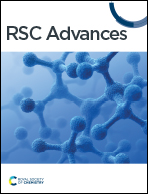A mini-review on liquid air energy storage system hybridization, modelling, and economics: towards carbon neutrality
Abstract
The rapid increase in energy consumption around the world is the main challenge that compromises and affects the environment. Electricity generation, which mainly depends on fossil fuels, produces around 80% of CO2 emissions released into the atmosphere. Renewables are a remarkable alternative for energy production. However, they are intermittent sources of energy. Liquid air energy storage (LAES) is a medium-to large-scale energy system used to store and produce energy, and recently, it could compete with other storage systems (e.g., compressed air and pumped hydro), which have geographical constraints, affect the environment, and have a lower energy density than that of LAES. However, the low efficiency, high payback periods, and profit values of LAES hamper its commercialization. LAES is premature to be fully studied because lack of actual operating conditions and results from large plants, which affect the techno-economic predictions, in turn, affecting technology commercialization. Furthermore, the off-design conditions are not fully covered although it is a crucial step in system performance evaluation. To this end, the current mini-review sheds light on the LAES design, history, types, limitations, and the associated techno-economic analysis. In addition, state-of-the-art modelling tools are widely explained with benefits and shortage. Furthermore, LAES integration with other systems is explained widely, as it was found to boost the system performance and increase the profit with lower payback periods.

- This article is part of the themed collections: Advances in Sustainable Hydrogen Energy and 2023 Reviews in RSC Advances


 Please wait while we load your content...
Please wait while we load your content...